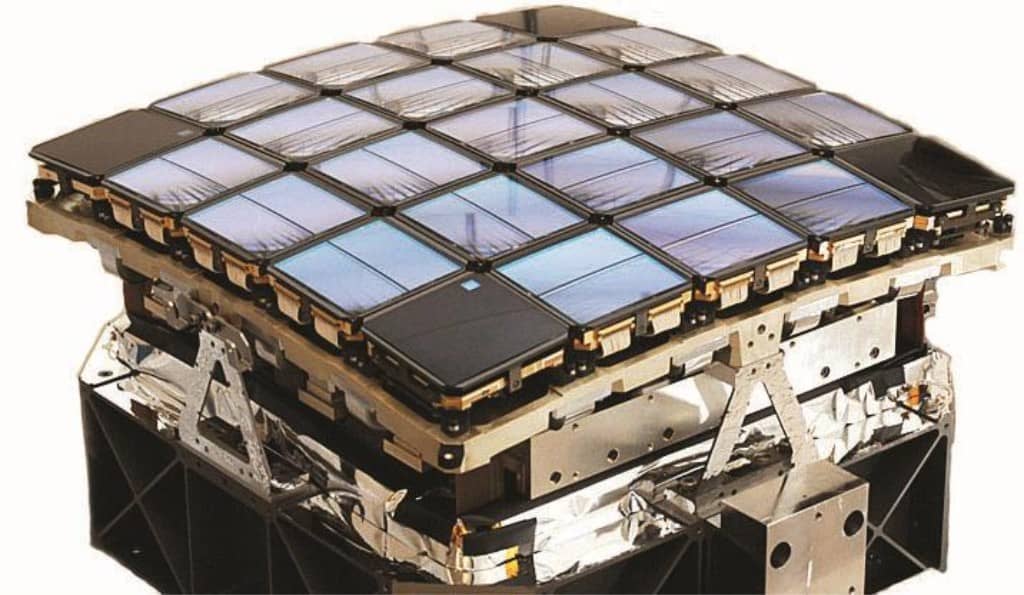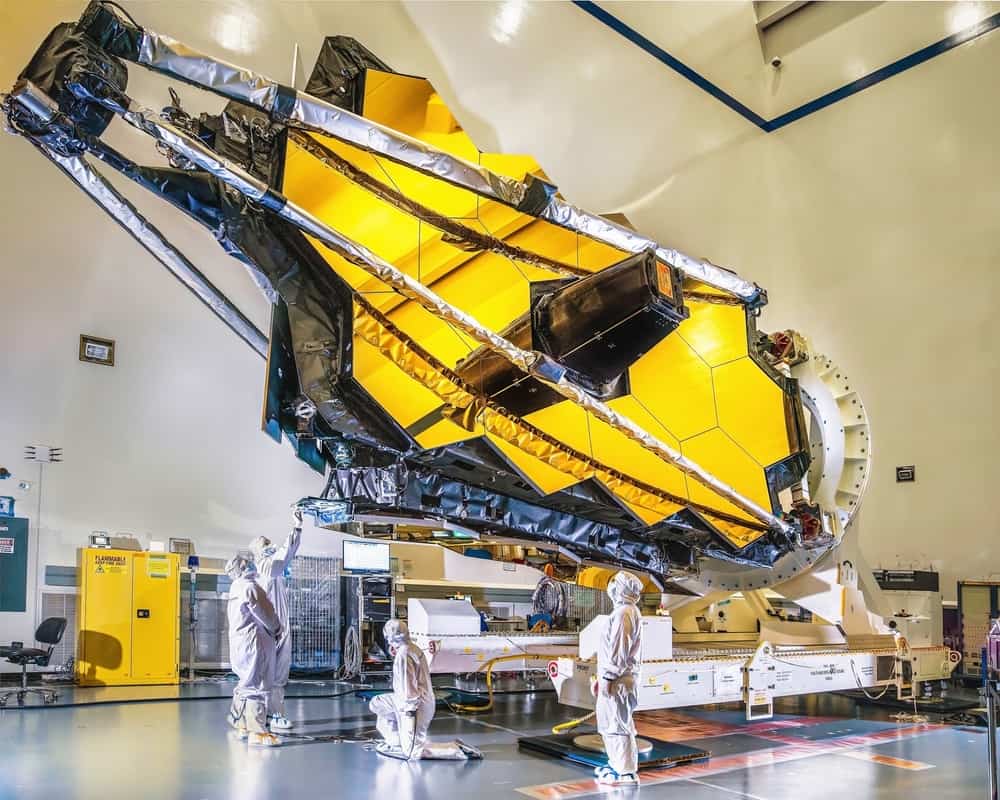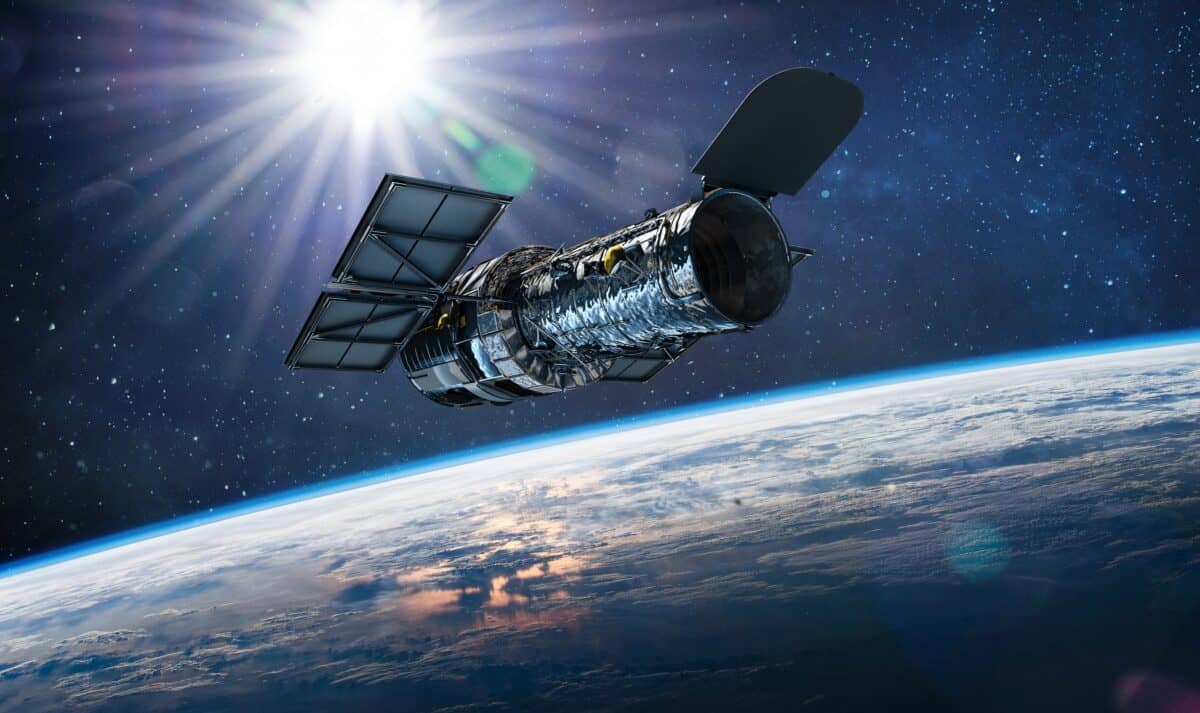In September 2022, the James Webb Space Telescope relayed a clear image of the Tarantula Nebula, a thick cloud of space dust renowned for its high volume of birthing stars.
This is just the latest image to come back from NASA’s newest telescope. However, Webb isn’t the only stellar observatory in the sky.
Space and exploration associations across the world have launched telescopes peering back 13 billion light years. Covering the entire light spectrum from visible light to infrared, these telescopes have opened up our imagination to what the universe entails.
Continue reading for the largest space telescopes currently in orbit:
#10: Planck
At the top of our list of the largest space telescopes in orbit is the Planck Observatory. The instrument was launched in 2009 alongside the Herschel Space Observatory on an Ariane 5 European rocket. The ESA-controlled observatory measures nearly 14 feet wide and has a payload of 205 kilograms.
The Planck Observatory orbited at the second Lagrange point (L2) and observed the earliest cosmic microwaves. The instrument was used to map the first light in the universe as well as dark matter and dark energy. When the observatory returned its all-sky map in 2013, researchers were able to estimate a more accurate age of the universe.
Planck had a mission timeframe of at least 15 months and continued to return data for over four years before it was decommissioned in 2013. The observatory was directed into heliocentric orbit before the ESA officially terminated communications.
#9: CoRoT

The space telescope CoRoT (which stands for Convection, Rotation, and planetary Transits) was a joint project between the French CNES and ESA. The telescope was launched on a Russian Soyuz-2 rocket, which handles many of the world’s small to medium-launch payloads. CoRoT, which started its missions in 2006, comes in at 7 by 13 feet and weighs about 626 kilograms.
The French telescope monitored objects on the visible wavelength spectrum to search for extrasolar planets, which are any planet within another solar system beyond ours. In 2008, CoRoT returned data suggesting it had discovered the smallest exoplanet in history. Upon further review, the object could have also been a brown dwarf star.
CoRoT had a mission timeline of up to four years. The space telescope continued observing exoplanets for over three years past its timeline and was decommissioned in 2014. CoRoT was lowered into orbit and burnt up in the atmosphere.
#8: Herschel Space Observatory
The larger of the pair of instruments that the ESA launched in 2009, Herschel Space Observatory makes up the 8th largest space telescope on our list. The observatory was sent to L2 alongside Planck, launching from the Guiana Space Centre in French Guiana. Herschel is only slightly bigger than its partner, measuring 25 by 13 feet and weighing just under 317 kilograms.
Upon reaching L2 for its missions, the European Space Observatory was the largest infrared telescope at the time. Observing wavelengths from 55 to 672 µm, researchers used Herschel to search for water in comets and distant space clouds. The observatory’s IR technology also allowed it to peer through obstructions to see the early formations of stars.
Herschel was expected to gather data for a minimum of three years. The telescope went on with its missions for a total of four years before the ESA decommissioned it. Herschel now travels in heliocentric orbit with the James Webb Space Telescope becoming the successor of its duties.
#7: Kepler Space Telescope

In 2009, NASA launched the Kepler Space Telescope into Heliocentric orbit. The instrument launched on a Delta II rocket from Cape Canaveral and started its mission only 5 days later. Kepler is denser than our previous telescopes, with dimensions of 15 by 9 feet and a weight of 1,052 kilograms.
Kepler Space Telescope is another instrument that monitored the visible light spectrum. It allowed NASA to observe exoplanets alongside the CNES CoRoT. Kepler specifically searched for planets within the habitable zones of distant stars in hopes of finding objects similar to Earth.
NASA’s Earth-trailing space telescope returned data for nearly 10 years, well beyond its 3.5-year mission timeframe. Kepler’s reaction control system fuel ran out in 2018, and the instrument was decommissioned.
#6: Neil Gehrels Swift Observatory
The 6th largest space telescope on our list is also the first to still actively send back information. NASA launched the Neil Gehrels Swift Observatory in 2004 on a Delta II rocket. The instrument measures 18 feet square and weighs over 1,470 kilograms.
NASA commissioned the observatory (formerly called Swift Gamma Ray Burst Explorer) to study gamma rays, but it’s also capable of examining X-rays, ultraviolet, and visible light. Researchers use the Neil Gehrels Swift Observatory to look for the universe’s most powerful explosions. The observatory has returned spectacular results, having caught the longest known afterglow of an explosion, lasting 125 days, in 2007.
The space telescope originally had a mission timeline of two years. However, nearly 18 years later, Neil Gehrels Swift continues to operate. The observatory currently lives in a Geocentric orbit, traveling around the Earth.
#5: Spitzer Space Telescope

The Spitzer Space Telescope begins to define the line of the truly largest space telescopes in orbit. The smallest of NASA’s proposed Great Observatories program, Spitzer launched on a Delta II rocket in 2004 from Cape Canaveral. The instrument has a 3-foot diameter primary mirror and weighs nearly 900 kilos.
Spitzer is one of four powerful telescopes that set out to observe as much of the wavelength spectrum as possible. Equipped with sensitive infrared cameras, the instrument set out to analyze the most distant cosmic objects. While its companion observatories have historically overshadowed it, Spitzer was the first tool to discover the location of an exoplanet.
The space telescope had a mission timeframe of a little over 5 years. However, researchers continued to collect data from Spitzer for well over 16 years, only decommissioning it in favor of its successor, the James Webb Space Telescope. NASA terminated communications with the instrument in January 2020.
#4: Fermi Gamma-Ray Space Telescope
After NASA’s premier gamma-ray telescope failed, the space agency set out to develop a new one. The Fermi Gamma-Ray Space Telescope launched in 2008 on a Delta II rocket, orbiting the Earth. While not as large as its predecessor, Fermi is still massive. The instrument came in at 9 by 8 feet, featured solar wings that expanded 15 feet in length and had a launch mass of 4,303 kilos.
Fermi’s gamma-ray instruments allow it to see the most aggressive wavelengths in the universe and examine objects such as dark matter, black holes, and pulsars. The huge telescope went right to work, quickly discovering some of the largest gamma-ray sources in the galaxy as well as the largest gamma-ray burst ever recorded.
Unlike other observatories set in unapproachable orbits, NASA planned for Fermi to sit in a Geocentric orbit and have a long lifespan. The telescope was scheduled to observe gamma rays for up to 10 years, and it is still in operation four years later.
#3: Chandra X-Ray Observatory
The third instrument of the Great Observatories program, Chandra launched into Geocentric orbit in 1999. The space observatory climbed into space upon Space Shuttle Columbia from the Kennedy Space Center. Considered a flagship-class telescope, Chandra measures 45 by 64 feet and weighs 954 kilos.
The observatory does its part in observing the various wavelengths, focusing on X-ray astronomy. Chandra’s equipment allows it to capture the energy produced from incredibly hot matter, such as emissions from quasars and particles sucked into black holes. The Observatory has sent back incredible data, including the first X-ray images of Mars.
Chandra continues its orbit around the Earth, having surpassed its 5-year life expectancy nearly 5 times.
#2: James Webb Space Telescope

The second-largest space telescope is also the newest on our list. The James Webb Space Telescope launched in December 2021 on an Ariane 5 rocket from the Guiana Space Centre in French Guiana. The instrument comes in at 66 by 46 feet with a sun shield the size of a tennis court and weighs roughly 6,500 kilos.
James Webb is equipped with several infrared instruments capable of observing wavelengths from 0.6 to 28.3 μm. The tools allow it to carry out four mission objectives, which include peering through thick clouds of space dust. The telescope also has the range to view farther back into the life of the universe than ever before.
The James Webb Space Telescope launched into L2, over 1 million miles from Earth. The telescope has a mission timeframe of about 5 years, after which it will slowly float into space.
#1: Hubble Space Telescope

Starting its missions as early as 1990, the Hubble Space Telescope is the largest space telescope still in orbit. The instrument launched on the Space Shuttle Discovery from the Kennedy Space Center. The second largest of the Great Observatories program, Hubble measures 43 by 14 feet and weighs nearly 12, 246 kilos.
The Hubble Space Telescope uses a variety of tools that view ultraviolet, some infrared, and visible light. It uses its equipment to view as far as 13.4 billion lightyears deep into space. The historic telescope is also known for its stunning cosmic imagery, which has inspired people around the world to aspire toward space exploration.
Originally planned to last about 15 years, Hubble continues to collect data 32 years after its launch. NASA plans to decommission the space telescope in the early 2030s.
Honorable Mention: Compton Gamma Ray Observatory
The Compton Gamma-Ray Observatory made up the largest of the four Great Observatories. Weighing over 17,000 kilos, Compton orbited the Earth for 9 years observing the largest gamma explosions in the universe.
However, one of the telescope’s gyroscopes failed in 1999, making it unstable and possibly dangerous if left to crash randomly. The instrument was de-orbited, with NASA deliberately crashing it into the ocean.
Summary of the 10 Largest Space Telescopes in Orbit
Check out our list of the 10 largest space telescopes in orbit:
| Telescope | Size |
|---|---|
| 1. Hubble Space Telescope | 24,490lbs |
| 2. James Webb Space Telescope | 13,580lbs |
| 3. Chandra X-Ray Observatory | 10,560lbs |
| 4. Fermi Gamma-Ray Space Telescope | 9,487lbs |
| 5. Spitzer Space Telescope | 1,877lbs |
| 6. Neil Gehrels Swift Observatory | 1,858lbs |
| 7. Kepler Space Telescope | 1,054lbs |
| 8. Herschel Space Observatory | 694lbs |
| 9. CoRoT | 660lbs |
| 10. Planck | 452lbs |
The image featured at the top of this post is ©cometa geo/Shutterstock.com.

